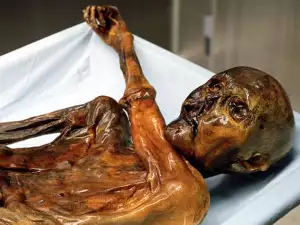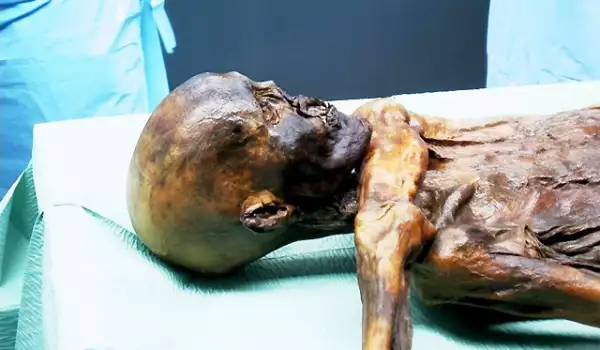Bigfoot, the snow prehistoric man imposed his bleeding wounds with moss and crossed the Alps, according to a first ever study of the intestinal ice mummy, reports National Geographic.
The study of vegetation helps to trace his last journey, as it becomes clear that the 46-year-old Snowman has traveled a great distance in a short period of time.
Shocking discoveries began in 1991 when a mountain glacier in South Tyrol, Italy, discovered Bigfoot, one of the oldest and most well preserved ice mummy.
It is believed that the Snowman had died from an arrow wound and severe head injury while traveling through the Alps about 5300 years ago.
In the course of research on the ice mummy, scientists took five samples from the last feeding of Bigfoot. Two of the small intestine, two colon and one of his rectum. By enacting a tube in his intestines when dried. Researchers examined these samples under a microscope and identified six different types of moss.
One type, peat moss Sphagnum imbricatum, known as swamp moss caused a huge surprise.
"It was a complete shock to find that, because this species does not grow anywhere near the place where found Snowman" said James Dixon, a botanist at the University of Glasgow.
The closest place where it can grow like moss is a marshy lowland about 12 miles (20 km) south from where Bigfoot had been found.
Dickson and his colleagues conclude that the Snowman used the highly absorbent moss, to stop the bleeding gash on the palm of his right hand. "Peat moss is well known for its antibiotic properties, " said Wood Dzhakyui an independent archaeologist from the United Kingdom.

Another type of moss found in research on Bigfoot is that it is likely it sources from water in caves or streams. Hymenostylium recurvirostrum, grows only in the moist environment of limestone rocks. "Probably the Snowman has swallowed this kind of moss drinking water”, established Dixon.
"The most likely explanation for this moss is that it has been used to wrap pieces of meat from red deer and alpine ibex (a type of mountain goat) that the Snowman had worn during his campaign. When he had eaten the flesh, he most likely took a little moss " says Dixon.
Together with pollen and cereals found in the intestines of Bigfoot, moss helps scientists to determine the route that has elapsed the Snowman the last day of his life.
They are confident in their claims that the Bigfoot came from a high mountain, and then was rushed to the lowlands (which indicates swamp moss), and returned to high mountain areas at a distance of at least 37 miles (60 km) for two or three days.
Dixon claims in respect of the Snowman that, "Equivalence of his physique today may be the Olympic middle weight fighter”.









